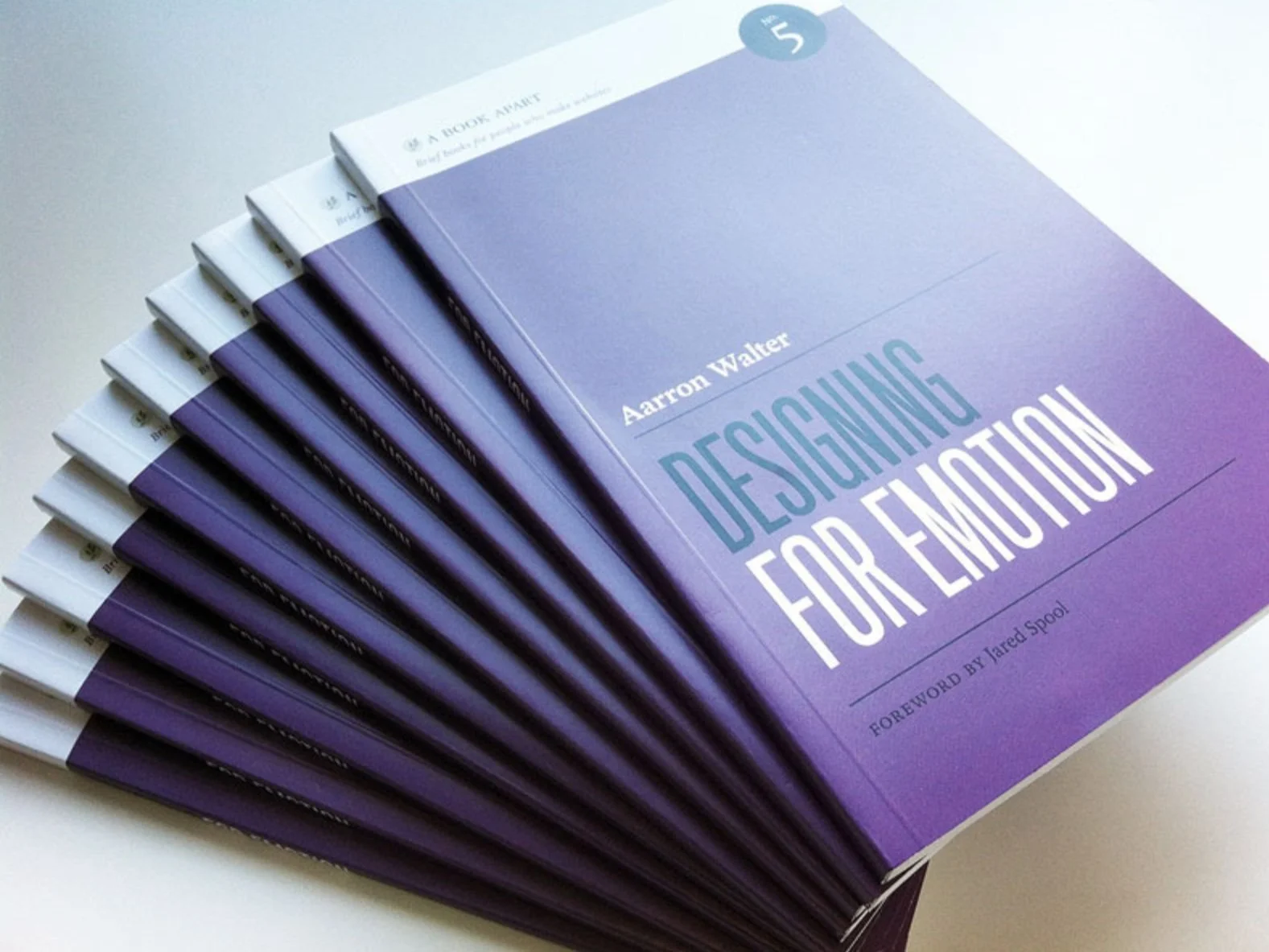Designing for Emotion
By Aarron Walter
Featured in the spectacular A Book Apart series, Aarron Walter’s Designing for Emotion is a book that summarizes what I love about impactful UX design.
A probably inadequate summary of Walter’s thesis might be as follows: Design products for the human experience. Google’s UX Design Certificate courses highlight empathy as a core tenant of great design. Walter underscores this by getting hyper-specific about how to enact empathetic, user-centered design.
With sound research and real-world examples, Walter’s book covers topics like the relationship between memory and emotion and designing for inclusion.
The chapter that perhaps resonated with me the most is Personality, which (surprise, surprise) argues that great UX is designed for personalities. In fact, a characteristic of great UX is often that it embodies its own personality.
This might mean using conversational writing that conveys messages in human speak. It could be owning mistakes when there’s an error in UX (like throwing 404 pages), or acknowledging that a specific part of the journey might feel uncertain or a little scary for users.
In short, Walter’s argues that products build with personality causes them to stand out from the crowd, make a long-lasting impression on users, and maybe most importantly, “Find your People.”
On this last benefit, Walters writes that UX that establishes a personality might appeal to some while turning others off. And that’s a good thing! In my opinion, far too many web products try to speak to everyone.
In doing so, they fail to establish a distinct personality and often speak to no one, putting them at a competitive disadvantage. Great UX solves problems for specific user personas. It wins over their hearts and forges a loyalty that will drive reliable revenue and growth. But to do that, if you want to turn away less-than-ideal customers.
Jellyvision: Selling Products with Personality
I saw this very thing play out at Jellyvision, years before I read this book. As mentioned in an earlier post about Cass and Sunstein's book Nudge, I sold a product at Jellyvision called ALEX, which used principles of humor and delight to engage users on the least sexy of topics: Insurance benefits.
To do this, ALEX was built with a distinct, unforgettable personality. The UX was cheeky, irreverent, kind, and understanding. ALEX’s personality was a huge reason why the product was a hit. Many of our competitors at the time eschewed any kind of personality in their UX. Instead, they built decision support products with a tone that was more typically buttoned-up, written by and for corporate audiences.
Without a doubt, ALEX left an indelible impression on users and on our enterprise customers. And it created a divide. Many loved ALEX’s boldness. Those who didn’t stayed away. And as someone responsible for new logo acquisition, this was terrific.
Business was easier to win when we “found our people.” Equally important, business was easier to lose we encountered those who weren’t are people. Had we delivered a product that was built for everyone, we would have lost so many more opportunities in the former category and not gained nearly enough in the latter to compensate.
Most of all, selling products that distinguish themselves with personality is fun. It allowed us to go to market and tout what we believed in: That great decision support requires an emotional connection, and there’s no better way to establish that connection than with personality.

